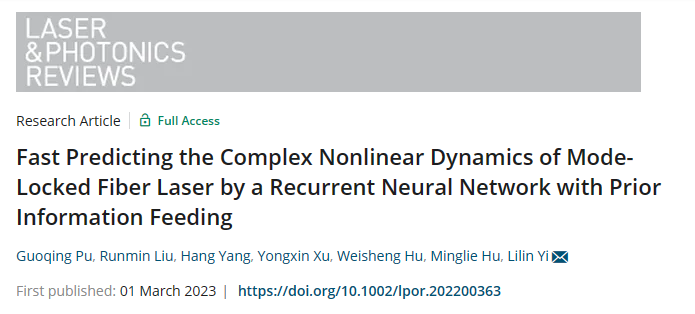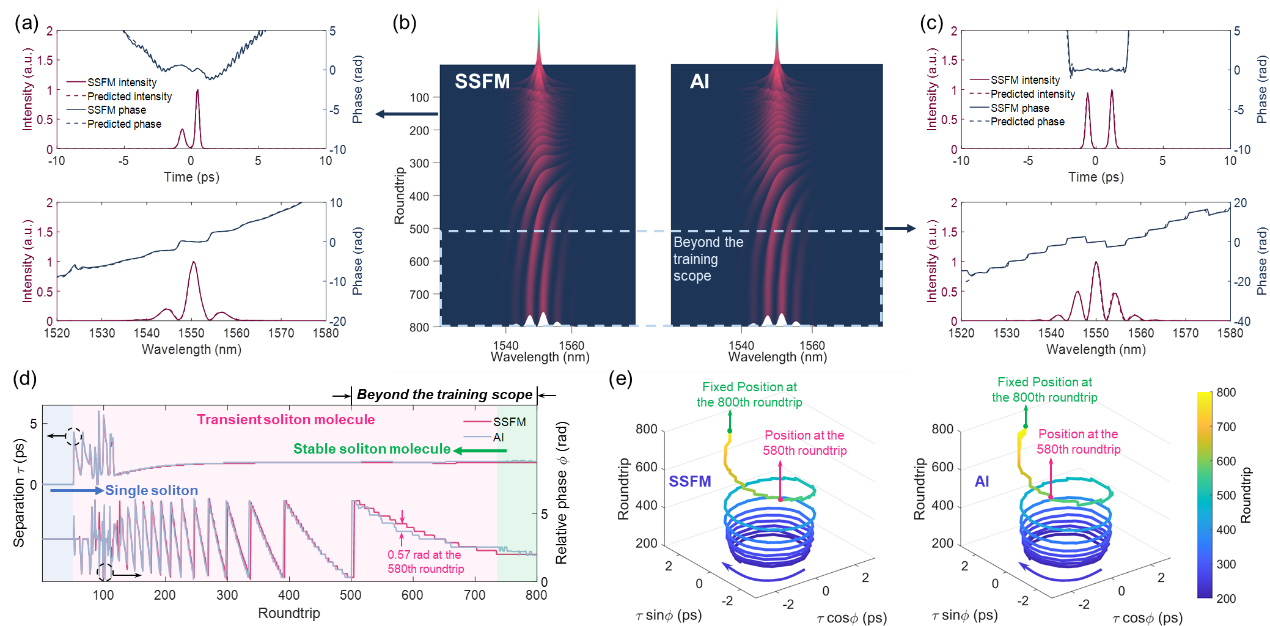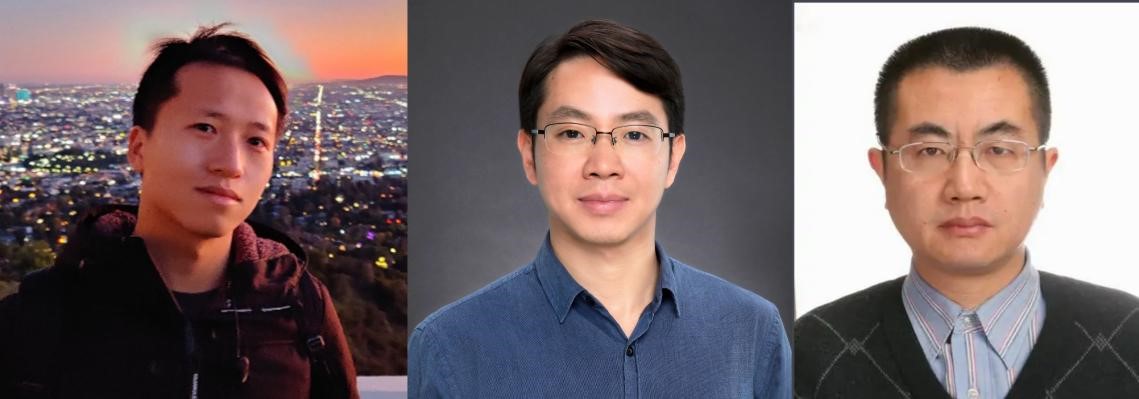- Home
- About Us
- Students
- Academics
-
Faculty
- Electrical Engineering
- Automation
- Computer Science & Engineering
- Electronic Engineering
- Instrument Science and Engineering
- Micro-Nano Electronics
- School of Software
- Academy of Information Technology and Electrical Engineering
- School of Cyber Security
- Electrical and Electronic Experimental Teaching Center
- Center for Advanced Electronic Materials and Devices
- Cooperative Medianet Innovation Center
- Alumni
-
Positions
-
Forum
News
- · Shanghai Jiao Tong University professors Lian Yong and Wang Guoxing's team have made remarkable progress in the field of high-efficiency pulse neural network accelerator chips.
- · AI + Urban Science research by AI Institute was selected as cover story in Nature Computational Science!
- · The first time in Asia! IPADS's Microkernel Operating System Research Wins the Best Paper Award at SOSP 2023
- · Delegation from the Institution of Engineering and Technology Visits the School of Electronic Information and Electrical Engineering for Journal Collaboration
- · Associate professor Liangjun Lu and research fellow Jiangbing Du from Shanghai Jiao Tong University made important advancements on large capacity and low power consumption data transmission
Important progress made by Prof. Lilin Yi's team at Shanghai Jiao Tong University in the rapid and accurate modeling of mode-locked fiber lasers
Prof. Lilin Yi's team at the Department of Electronic Engineering at the School of Electronic Information and Electrical Engineering of Shanghai Jiao Tong University, in collaboration with Prof. Minglie Hu's team at Tianjin University, used a recurrent neural network to achieve rapid and accurate modeling of mode-locked fiber lasers. The running speed is 146 times faster than the traditional split-step Fourier method. The prior information feeding method is proposed to achieve generalization for parameters excluded by the signal waveform, such as the cavity length and small signal gain (corresponding to pump power), enabling the fast and accurate modeling of different states (soliton, soliton molecule, etc.) evolution. The relevant research results were published in the international optics journal Laser & Photonics Reviews in March 2023 under the title "Fast Predicting the Complex Nonlinear Dynamics of Mode-Locked Fiber Laser by a Recurrent Neural Network with Prior Information Feeding."

Research background
Modeling mode-locked fiber lasers is of great significance for laser design and optimization. The traditional modeling method based on the split-step Fourier method to solve the nonlinear Schrödinger equation uses small-step iteration calculation, with high computational complexity and long operation time. The dynamics of the mode-locked laser are very complex due to the coupling of multiple factors inside the laser (dispersion, nonlinearity, loss, gain). The generation of solitons often requires hundreds of round trips inside the cavity, and the propagation distance of light during the establishment of solitons can reach a kilometer level. To achieve long-distance accurate prediction, this study proposes to use long short-term memory recurrent neural networks (LSTM) to model the mode-locked laser. The split-step Fourier method needs to iteratively calculate multiple times at the set step length to obtain a waveform of one round trip, while LSTM only needs to perform forward propagation once to obtain a waveform of one round trip, thus significantly improving the operation speed.

Figure 1. a) The AI model with prior information feeding for intra-cavity evolutionary process inference. SSFM, split-step Fourier method; LSTM, long-short term memory. b) The workflow for using the AI model.
The cavity length and small signal gain (corresponding to pump power) are the two basic parameters for evaluating the working state of the mode-locked laser. The former determines the laser's repetition rate, while the latter determines the laser's output state (such as whether it is mode-locked). However, these two parameters are laser characteristics and are not included in the waveform data of each round trip. Therefore, how to inform LSTM of the cavity length and small signal gain and let LSTM predict different dynamic processes under the same initial waveform (fixed pulse is used for initial state to accelerate the dynamic process) has become a major challenge. To address this, this study proposes the Prior Information Feeding method (see Figure 1(a)), which uses a fully connected layer to raise the dimension of the cavity length and small signal gain parameters, and then adds them to the waveform data to form the input of the subsequent LSTM layers, thus achieving generalization for the cavity length and small signal gain. When using AI to model mode-locked lasers, first use the split-step Fourier method to produce the dataset, then divide the dataset, use the training set to train the AI, and finally evaluate the AI performance on the test set.
Innovation achievements
Figure 2 shows that AI can accurately predict the dynamic process of soliton establishment, with the intensity and phase in both the temporal and spectral domains accurately predicted, and the spectral beating phenomenon during the process of soliton establishment accurately restored by AI. By further increasing the small signal gain, the generation of soliton molecules can be observed, as shown in Figure 3. AI can also accurately predict the dynamic process of the establishment of soliton molecules, and even performs well in 500-800 round trips beyond the training range (the training dataset only contains waveform data of 500 round trips), and the prediction deviation of the spacing and relative phase of soliton molecules is also small (see Figure 3(d)).

Figure 2. The soliton formation comparison between the SSFM and the AI model.

Figure 3. The soliton molecule formation comparison between the SSFM and the AI model.
Table 1 compares the running time of AI and the split-step Fourier method (500 round-trip calculations). The average running time of the split-step Fourier method on an AMD Ryzen 7 5800H CPU is 13.145 s. When using a 2-layer LSTM, the modeling error (NRMSE) of AI is only 0.102 and the average running time on an AMD Ryzen 7 5800H CPU is 2.106 s, which is nearly 6 times faster than the split-step Fourier method. Furthermore, when accelerating the 2-layer LSTM AI model with RTX2080Ti GPU and CUDA, the average running time is only 0.09 s, which is nearly 146 times faster than the split-step Fourier method.

Table 1. Comparison between AI models with different numbers of LSTM layers and the SSFM
This study demonstrates that AI can be used to achieve fast and accurate modeling of complex mode-locked lasers, while achieving generalization of parameters such as cavity length and small signal gain. The researchers of this work stated that this technology can greatly improve the efficiency of laser design and optimization, and is expected to become a universal method for mode-locked laser modeling.
Paper Information
Authors: Guoqing Pu (Postdoctoral researcher at Shanghai Jiao Tong University), Runmin Liu (PhD student at Tianjin University), Hang Yang (PhD student at Shanghai Jiao Tong University), Yongxin Xu (PhD student at Shanghai Jiao Tong University), Weisheng Hu (Prof. at Shanghai Jiao Tong University), Minglie Hu (Prof. at Tianjin University), and Lilin Yi (Prof. at Shanghai Jiao Tong University).

From left to right: Guoqing Pu, Lilin Yi, Weisheng Hu
Shanghai Jiao Tong University is the first affiliation for this research. Guoqing Pu is the first author, and Prof. Lilin Yi is the corresponding author.
Funding: This research work was supported by the National Natural Science Foundation of China Major Research Instrumentation Project (62227821) and the Outstanding Youth Fund Project (62025503).
Paper Link: https://onlinelibrary.wiley.com/doi/10.1002/lpor.202200363
Journal Information: Laser & Photonics Reviews is an internationally peer-reviewed optical journal dedicated to publishing high-quality review papers and research work in the field of optics, with an impact factor of 10.947.
-
Students
-
Faculty/Staff
-
Alumni
-
Vistors
-
Quick Links
